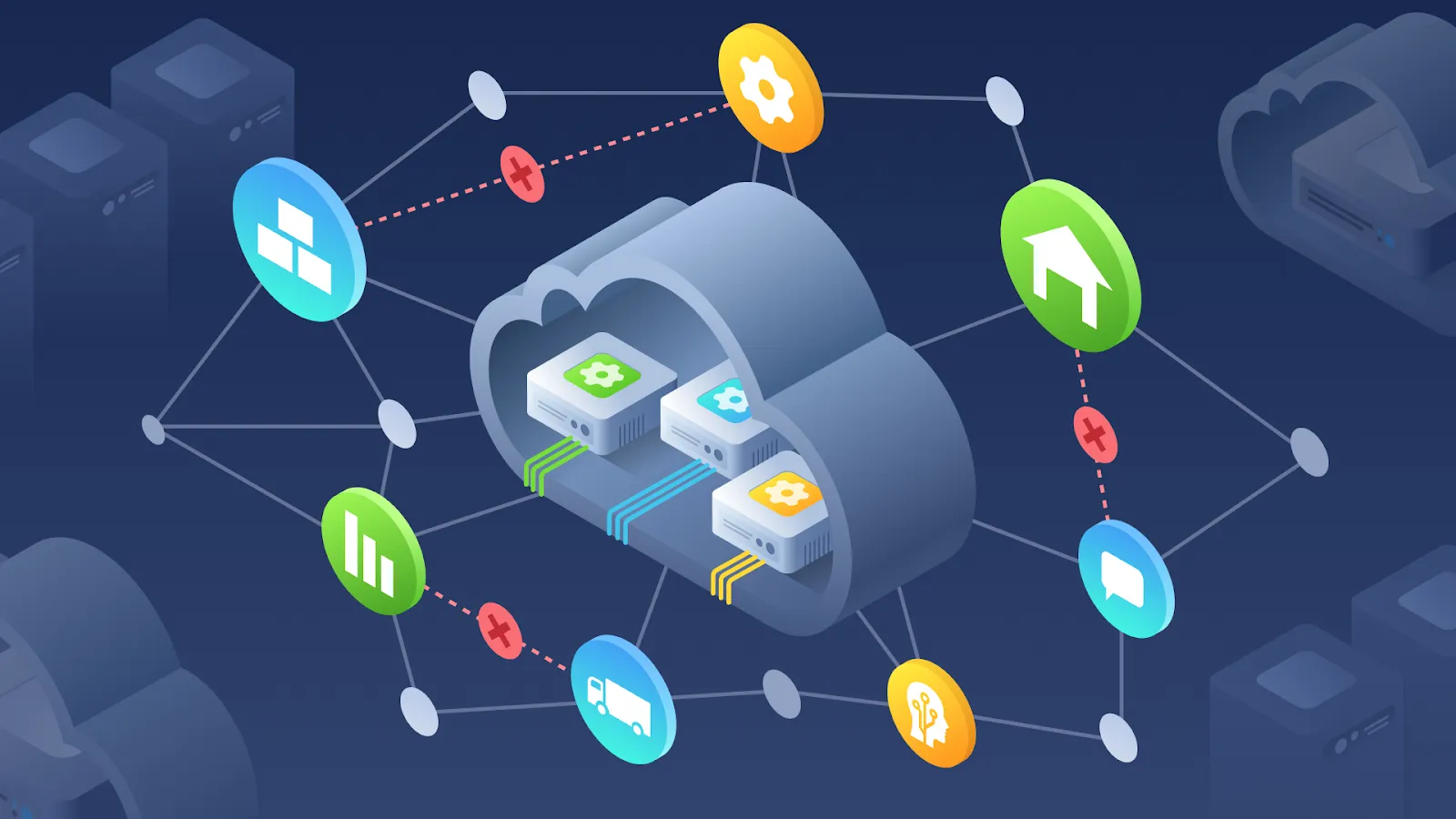Amazon Web Services (AWS) has more than a million active customers located in over 240 countries and territories across the globe. That encourages AWS to expand global infrastructure constantly to provide clients with lower latency and ensure higher throughput. Since clients may also grow their businesses, Amazon Web Services will continue to offer infrastructure that satisfies their global needs.
In this blog post, we will analyze the core components of the AWS Global Infrastructure:
- AWS Regions
- Availability Zones
- Edge locations
AWS Regions
AWS helps answer the critical question of what will happen during unforeseen circumstances like disasters by building its data centers in large groups, called Regions. They are built across the world to be closest to locations of business traffic demand. Among these locations are Paris, Tokyo, São Paulo, and Ohio.
Firstly, inside all Regions, AWS provides numerous data centers that offer different compute, storage, and other helpful services required for running your applications. Secondly, all Regions are connected via a high-speed fiber network. This network is controlled by AWS efficiently. That makes it a truly global operation. Thirdly, all Regions are isolated from each other. It means that absolutely no information cannot go in or out of your environment in a chosen Region. The only exception is you grant explicit permission for such data to move.
For instance, you might follow government compliance requirements that dictate your financial data in London not to leave the UK. Thus, any information stored in the London Region cannot leave this Region unless you provide the appropriate credentials and permissions for requesting the data to export. That makes regional data sovereignty a crucial component of the AWS Regions’ design.
Below, you can find four business factors to consider before selecting a Region:
- Compliance with data governance. Depending on the industry and location, your company might have to run its information out of specific areas. Therefore, if your organization needs to reside all the data within the German boundaries, you should select the Frankfurt Region.
- Proximity to clients. Choosing a Region that is the closest to your customer base helps you deliver the necessary content to them much faster. Let us imagine your organization is based in Ohio, USA, but most of your clients live in Singapore. In this case, you need to consider running the application out of the Singapore Region. Of course, you can do that from Ohio, but it will take more time and may result in significant latency.
- Feature availability. The situation may arise when the closest Region cannot offer all the features your company wants to provide to its customers. AWS is continuously innovating as they create numerous new services and expand on functionality within the existing ones. But making these services available across the globe often requires them to build out a large amount of physical hardware. Also, it sometimes means that AWS has to establish the service one Region at a time. Thus, you should choose the Region that already has the necessary hardware installed.
- Pricing. Despite the hardware being equal among various Regions, several locations are more expensive. Today, Brazil’s tax structure shows that operating the same services in this country is much more costly than in the USA. For example, performing the same workload in the São Paulo Region is 50% more expensive than running it out of the Oregon Region. Ultimately, you have to remember that each Region offers a different price sheet. And if you consider budget as the primary concern, you need to run out of another country, although most of your clients may live in Brazil.
Availability Zones
Availability Zone (AZ) consists of one or more discrete data centers existing within a Region and providing redundant power, networking, and connectivity. These centers are located in separate facilities. Availability Zones allow customers to run production apps and databases that ensure higher availability, fault tolerance, and scalability compared to single data centers. Today, there are 84 Availability Zones within 26 geographic Regions across the globe.
Although each AZ is isolated, they are connected via low-latency links within a relevant Region. AWS offers customers sufficient flexibility for placing instances and storing information within numerous geographic Regions and numerous AZs within each Region.
AWS designs all Availability Zones as independent failure zones. It means that AWS separates AZs physically within a traditional metropolitan region, and each AZ is located in a lower-risk flood plain. Apart from the uninterruptible power supply (UPS), along with onsite backup generation facilities, AWS data centers in various AZs also get supply from independent substations. That allows reducing the risk of an unforeseen occasion related to the power grid, which may affect more than one AZ.
All traffic between Availability Zones is encrypted. Besides, the network performance can provide the accomplishment of synchronous replication between relevant AZs. Availability Zones make it easy to partition applications to ensure high availability. After all, partitioning apps across AZs helps organizations become better isolated and offers protection from different issues, including power outages, lightning strikes, or natural disasters. That is why Availability Zones require tens of miles of physical separation, which is quite a meaningful distance.
Ultimately, running your application across multiple AZs within a Region is among the best practices to recommend. Then, in the case of disasters, your app continues to perform correctly since such disasters only knock over some of the capacity. Also, you may quickly add more capacity using the remaining AZs. That allows your organization to operate with no interruption.
Edge locations
You may have a reasonable question: what if your customers are in different parts of the world or cities far from your AWS Regions? Fortunately, there is no need for your company to build a new data center. But let us analyze this situation from the IT viewpoint.
For example, you have many clients in Mumbai accessing your information, but this information is run out of the Tokyo Region. In this case, instead of making such Mumbai-based clients send requests constantly to Tokyo for accessing the necessary data, you can place or cache a relevant copy locally in Mumbai. The process of caching copies of information closer to clients across the globe applies the concept called content delivery networks (CDNs).
On AWS, you can use Amazon CloudFront, a service that allows delivering information, video, applications, or APIs to clients across the world. Amazon CloudFront provides low latency, along with high transfer speeds. But the critical thing is that this service utilizes so-called Edge locations for accelerating communication with customers, regardless of where they are.
Since Edge locations and Regions serve as separate infrastructure components, your business can push content from Regions to a specific collection of Edge locations across the globe. That allows accelerating both communication and content delivery. At the same time, Edge locations run Amazon Route 53, a well-known domain name service (DNS) on AWS. That directs clients to the appropriate web locations and ensures reliable low latency. Therefore, Edge locations are typically used by end-users who need to access your services.
The bottom line
If your organization considers deploying services on AWS, you need to have a clear understanding of AWS Regions, Availability Zones, and Edge locations. You have to know what these components of the AWS Global Infrastructure may allow you to do and how they are connected. That can help your company build an efficient solution that provides resiliency, high availability, security, and low latency and achieve the maximum benefit from that.
How AgileVision can help
As a certified AWS Consulting Partner, AgileVision has helped companies of different types and sizes migrate to the cloud environment. Are you considering implementing AWS products and services to meet your specific business needs or need advice on your current infrastructure?




